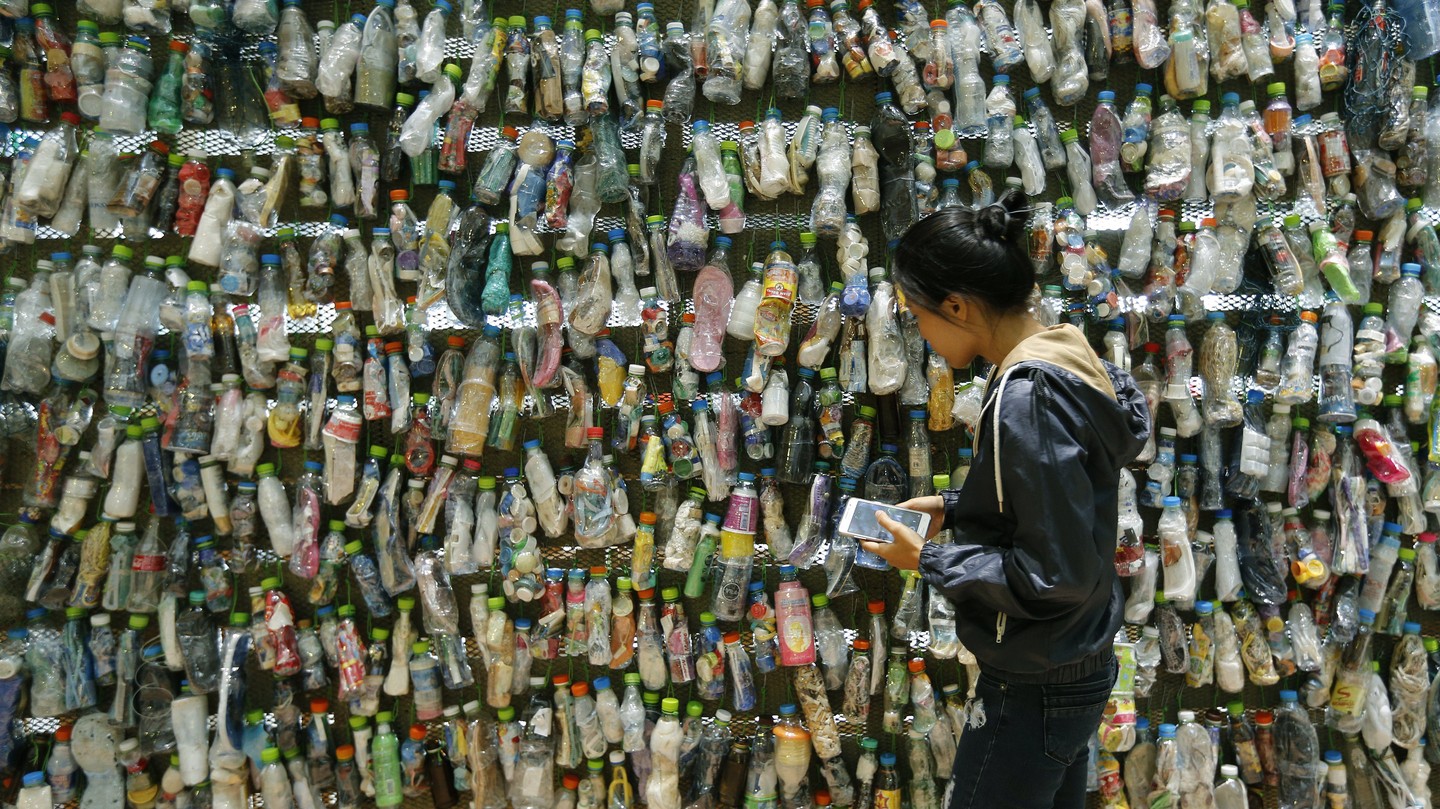BRYSON MASSE
 For the first time, scientists have calculated how much plastic we've produced, and its fate. It isn't pretty.
For the first time, scientists have calculated how much plastic we've produced, and its fate. It isn't pretty.
If you think about it, plastics should be considered one of the defining technologies of the 20th century. Their flexibility, cheap manufacturing costs, and resistance to degradation has meant the use of plastics outpaced most other man-made materials. Today, many of us can't remember a world without plastic, which went into large-scale production in the 1950s. But we're now learning the costs of this wonder material—oceans full of indestructible micro-particles that are harming sea life and polluting waterways. We have no idea how to get rid of them.
With a study published on Wednesday in Science Advances, we know how much plastic we've created, and where most of it has gone. This represents the first global analysis of all the plastics ever made on the planet, and big surprise, it isn't pretty.
As of 2015, it finds, humanity has produced over 8.3 billion metric tons of plastic. Of that, 6.3 billion metric tons has become waste. With just over 7 billion peopleon the Earth as of 2015, this would represent more than one metric ton per human being. Most plastics don't really biodegrade, and can hang around for hundreds or thousands of years.
Only 9 percent of the 6.3 billion tons of waste was recycled
The study authors, who are based at the University of Georgia and the University of California, Santa Barbara (UCSB), as well as with the nonprofit Sea Education Association, gathered the figure after analyzing industry sources, and some were easier to find than others. "It's basically putting together a big jigsaw puzzle. The only challenge is that you have to find the puzzle pieces first," said lead author Roland Geyer, associate professor at the Bren School of Environmental Science & Management at UCSB.
Considering most of it has been for single-use product packaging, from CD shrinkwrap to the disposable lids on coffee cups, that means we've basically thrown all of it away. But wait—what about all those recycling programs?
Geyer and his team found that only 9 percent (!) of the 6.3 billion tons of waste was ultimately recycled. As previously reported on Motherboard, there are actually a number of surprising hurdles to plastics recycling. It can be difficult to do, and we still don't collate and sort out our personal recycling as enthusiastically as we should.
Then there's the fact that plastics are made from oil. Cheap and plentiful access has meant that recycling isn't necessarily economically viable. "When the stock is cheap, which it now has been for a while, that just means that if it makes it very hard for recycled plastics to compete with virgin plastics," said Geyer.
The majority of plastic that isn't recycled still has to go somewhere. Geyer and his team found that we've managed to incinerate about 12 percent. But in the end, 79 percent of that 8.3 billion tons have either gone to landfills or, worse, out into the environment. Because of eroding landfills and poor waste management, terrestrial and marine ecosystems have accumulated microscopic plastic particles—so much that experts have started to use the build up of the material to indicate the beginning of humanity's geological era, the Anthropocene.
The study did take a look at the production of biodegradable and bio-based plastics, but found they only amounted to about 4 metric tons.
Those results were not included in the analysis.
There's no indication that the trend will reverse anytime soon. The researchers found that half of the total amount of plastic ever was created in the last 13 years. The pace of production continues to ramp up.
"We need big and bold approaches here. Notching up the recycling rate by a couple of percentage points is not going to cut it," Geyer said. "My hope would be that [the study] will add a sense of urgency to the debate about how we're going to use plastics in the future."
No comments:
Post a Comment